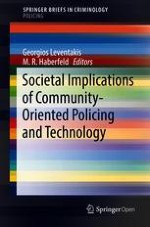
Open Access 2018 | OriginalPaper | Buchkapitel
3. Crowd Knowledge Sourcing – A Potential Methodology to Uncover Victims of Human Trafficking
verfasst von : Julia Muraszkiewicz
Erschienen in: Societal Implications of Community-Oriented Policing and Technology
Aktivieren Sie unsere intelligente Suche, um passende Fachinhalte oder Patente zu finden.
Wählen Sie Textabschnitte aus um mit Künstlicher Intelligenz passenden Patente zu finden. powered by
Markieren Sie Textabschnitte, um KI-gestützt weitere passende Inhalte zu finden. powered by